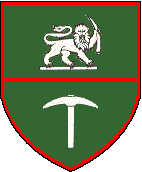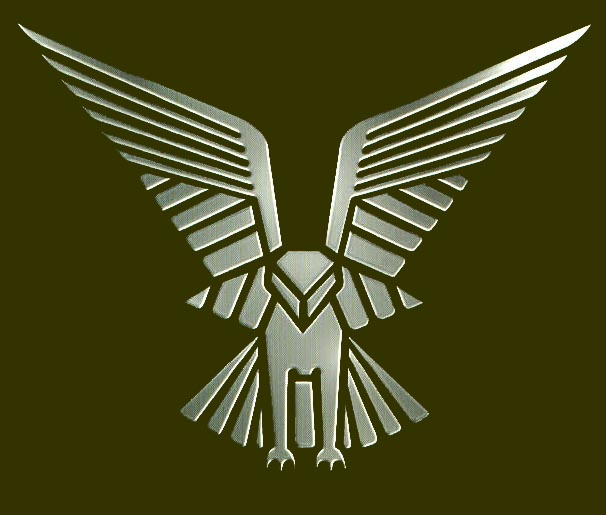EXTERNAL OPERATIONS OF THE
SELOUS SCOUTS
One of the basic aims of a
counter-insurgency war is to carry the fight to the enemy. In an age of
undeclared wars, terrorism and unprovoked aggression, it is an important strategy
to attack and counter-attack terrorist bases in the host countries. An excellent
example of this approach and its success in Rhodesia alone are the preemptive
air strikes, airborne/para assaults, ground and flying columns conducted by
Rhodesian Security Forces and the Selous Scouts against terrorist bases in
Zambia and Mozambique.
Throughout the conflict, the Selous Scouts conducted numerous operations and raids
outside of the country’s borders (see operations map below). Known in Rhodesian military
jargon as “External Operations”, simply a cross-border mission. The more
important operations are summarized here which were conducted by the Scouts.
In this respect, the various so-called “hot pursuit” raids that were
carried out into the northeastern border area of Mozambique during the
beginning of Operation Hurricane are not covered because these operations were
being conducted in a country that at that time was friendly to Rhodesia and
had authorized the raids.
Although the Selous Scouts were originally asked to
obtain internal intelligence on insurgents by posing as guerrillas, they
became increasingly involved in external operations as the conflict escalated.
Some of these operations were of a clandestine nature, to which they were
suited, while others were of a more conventional type.
|
OPERATIONS MAP:
Approximate locations of external targets

**NOTE** Target
"letters" are annotated on map.
|
SUMMARY OF OPERATIONS:
1.
Kidnapping of (ZIPRA) terrorists from Francistown, Botswana, March 1974
(target A). An eight-man team comprising four European and four
African Scouts was clandestinely infiltrated into Francistown to kidnap
several terrorists and bring them back to Rhodesia for interrogation. The
raiders captured four occupants of the ZIPRA headquarters and drove them
back across the border to Rhodesia without incident.
2. Kidnapping
of ZIPRA official from Francistown, Botswana, September 1974 (target A). Another team of Scouts (two Europeans and one African) was infiltrated
into Francistown to locate and kidnap a senior ZIPRA official. After several
false leads and some reconnaissance, the team finally located their man and
abducted him after a fierce struggle. He was then placed in the back of a car
and taken across the border to Rhodesia. However, the team left behind false
passports, a radio transmitter, and weapons in a hotel room, along with an
unpaid bill. One of the European members of the team had to return to the
hotel where he paid the bill, collected
the weapons and radio, and departed for Rhodesia without incident.
3.
Raid on Caponda, Mozambique, March 1975 (target B). Twenty Scouts staged an assault on
a ZANLA staging base 55 km north of Rhodesia. They traveled to and from the
target on foot. After a 24-hour march, the unit came upon the terrorist base
only to find it deserted. A cholera epidemic had broken out among the
terrorists and the camp had been evacuated. The unit returned safely to
Rhodesia.
4.
Mozambique, January 1967 (target G). This operation
involved a helicopter-borne assault by 15 Scouts against a ZANLA transit camp
that was destroyed.
5.
Operation Traveler: Attack on Caponda base, Mozambique, April 1976 (target
B). This operation involved another attack on the ZANLA
staging camp that was plagued by a cholera epidemic. The attacking force
consisted of a 20-man patrol that marched into Mozambique, attacked and
destroyed the camp, killing seven terrorists and wounding 16 others. The
raiding party returned to Rhodesia on foot, several of them having been
injured.
6. Operation
Detachment: Raid on Chigamane, Mozambique, May 1976 (target C). This
operation involved an attack on a ZANLA base 108 (km) inside Mozambique.
Twenty European and African Scouts dressed in FRELIMO uniforms traveled in
four military vehicles disguised as FRELIMO
vehicles. The ZANLA terrorist base was attacked and destroyed with rockets,
mortars, and machine guns. The raiders returned to Rhodesia safely.
7.
Operation Long John: Attack on Mapai, Mozambique, June
1976 (target D). This operation involved an
attack on a ZANLA base in Mapai, 48 miles inside Mozambique, by 58 Scouts
traveling in four trucks and two Scouts cars, all disguised as FRELIMO
vehicles. Along the way, the raiders disconnected telephone lines and
sabotaged the railway line. The column was allowed to enter the terrorist base
by
an unwitting sentry. Once inside, sappers destroyed 13 Mercedes busses
used to transport terrorists to the border (one bus was spared and was taken
back to Rhodesia as a souvenir). In addition, the insurgents’ entire armory
was seized and brought back to Rhodesia before an air strike was called in to
destroy the base. Nineteen terrorists were reported killed and 18 wounded; one
member of the raiding party was killed and a few were wounded.
8.
Nyadzonya/Pungwe Raid, Mozambique, August 1976 (target E).
This operation involved a raid on a large ZANLA base 60 miles inside of
Mozambique by a Scouts column comprising ten trucks and four armored cars,
again disguised as FRELIMO vehicles. The Scouts in the first four vehicles
were also dressed in FRELIMO uniforms. They cut the telephone lines leading
to the town where the terrorist base was located, then drove straight into the
camp. They then opened fire on the unsuspecting insurgent terrorists drilling
on the parade ground, killing at least 1,028. Fourteen important ZANLA
insurgents were captured and taken back to Rhodesia for interrogation. On
their way out of Mozambique, the raiding party blew up the Pungwe Bridge to
prevent any pursuit and returned to
Rhodesia safely. In a separate action, the covering team deployed to
block the column’s escape, ambushed a Land Rover whose six occupants
were found to be senior ZANLA officers; all six were killed.
9.
Operation Maradon: Attack on Jorge do Limpopo and Massengena,
Mozambique, October 1976 (target D). This operation involved an
attack against a ZANLA base at Jorge do Limpopo, 36 miles inside Mozambique.
The strike force traveled a circuitous 350 to 400 km roundtrip route, and two
reconnaissance teams (one of three and one of two men) were parachuted into
Mozambique in advance of the column. Upon entering Mozambique, the raiding
party laid Claymore mines on roads and booby-trapped the rail line. Telegraph
and telephone lines were also cut. The column then launched a succession of
attacks, destroying a FRELIMO garrison, derailing a troop train (and killing
36 of the terrorists on board), and destroying a large water reservoir, along
with railway switching points and several enemy military vehicles. A senior
FRELIMO commander was also killed. On November 2, the Scouts returned to
Rhodesia, having destroyed the terrorists’ logistical base of support.
They disrupted communications between Jorge de Limpopo, Malvernia, and
Massengena, wrecked two trains, destroyed all motor transport in the area, and
sowed landmines in various spots. This operation effectively undercut
ZANLA’s operational capacity and weakened insurgent morale.
10. Operation
Ignition: Attack on ZIPRA, Francistown, Botswana, November 1976 (target A). This operation involved an attack on ZIPRA’s headquarters in
Francistown by a team of Scouts. Its purpose was to destroy a stockpile of
suitcase bombs intended for use in
Rhodesia. The raiding party used previously captured insurgent suitcase bombs
to destroy the headquarters building and the stockpile of bombs, wounding five
insurgents in the process.
11.
Operation Aztec: Attack on Jorge do Limpopo, Mpai, and Madulo Pan,
Mozambique, May—June 1977 (target
D). This operation involved an attack
on several ZANLA bases 138 miles inside Mozambique by a motorized column of
110 Scouts disguised as FRELIMO soldiers. A railway line, the terrorist
bases’ chief source of supply, was also destroyed. In addition, military
vehicles and equipment were destroyed by Rhodesian Air Force air strikes flown
in support of the raiders.
12.
Operation Vodka: Raid on Mboroma ZIPRA camp, Zambia, December 1979
(target location not known). This operation involved a raid on a ZIPRA prison camp 96
miles inside Zambia containing 120 opponents of the terrorist organization
along with some African members of the Rhodesian security forces. A team of 42
Scouts were parachuted into the camp after it had been softened up by an air
strike. Resistance was quickly overcome: 18 guards were killed and six were
captured. Only 32 prisoners were freed, because the remainder were outside the
camp on work details. In the evening, the raiders and freed prisoners were
airlifted back to Rhodesia from a nearby airfield.
13.
Operation Petal I: Botswana, Mach 1979 (target F). This
operation involved the kidnapping of Elliot Sibanda, a senior ZIPRA
intelligence operative, by a team of Scouts who crept across the border into
Botswana and laid an ambush. Although badly wounded, Sibanda was captured and
brought back to Rhodesia alive.
15. Operation
Petal II: Francistown, Botswana, April 1979 (target A). This
operation involved an ambitious raid to kidnap the ZIPRA southern command. The
raiding party consisted of a small column of two armored cars and some other
trucks disguised as Botswanan military vehicles and Scouts dressed in Botswana
military uniforms. The column crossed the border and drove to the house being
used by ZIPRA and arrested its occupants. Before the victims realized what had
happened, they were back in Rhodesia.




